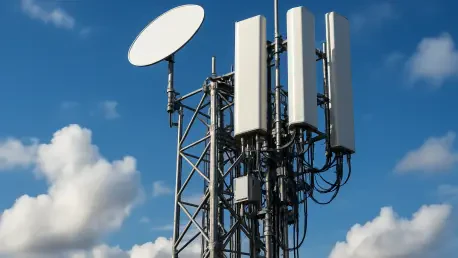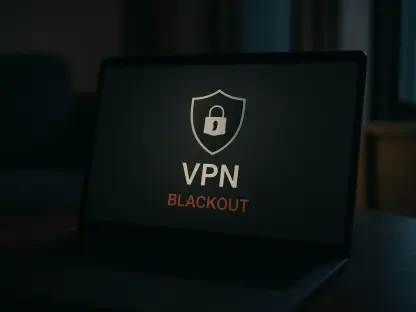Imagine a world where internet access is no longer confined to urban centers or well-connected regions, but extends to the most remote corners of the globe, enabling communication and digital services in areas once deemed unreachable. SpaceX’s Cellular Starlink service is poised to make this vision a reality, offering satellite-based connectivity that promises to bridge the digital divide in dead zones where traditional cellular networks simply cannot reach. This innovative technology aims to provide internet access through a network of satellites, allowing mobile devices to connect directly without the need for ground-based infrastructure. Early user experiences and strategic developments suggest transformative potential, though not without challenges. As this service evolves, it raises critical questions about the future of remote connectivity and whether it can truly deliver on its ambitious goals. This discussion delves into the current state of Cellular Starlink, its performance, and the broader implications for underserved regions.
Breaking New Ground in Satellite Internet
The concept of satellite internet is hardly new, but Cellular Starlink represents a significant leap forward by focusing on direct-to-device connectivity for mobile applications. Unlike traditional satellite services that often require bulky equipment and suffer from high latency, this technology integrates with standard smartphones, aiming to provide seamless access in areas devoid of cellular towers. A notable early tester, Jake Pimental, gained access to the service through Samsung’s beta software on a Galaxy S25 Ultra, even though initial support was tailored for specific devices under T-Mobile’s T-Satellite plan. His experience revealed that apps like navigation tools and social media platforms could function in remote locations, a feat previously unimaginable without ground-based networks. This breakthrough signals a shift in how connectivity can be delivered, potentially transforming industries reliant on constant communication, from emergency services to rural education. Yet, the journey to widespread adoption remains complex, with technical hurdles still in play.
While the ability to load digital content in isolated areas is groundbreaking, the performance of Cellular Starlink is not without its inconsistencies. During testing, basic functionalities like mapping services displayed satellite imagery with relative speed, but delays of up to 30 seconds were not uncommon due to intermittent satellite links. Social media platforms managed to load text and low-resolution media, and communication apps supported voice and video calls, though the quality often fell short of expectations compared to conventional networks. These early results highlight the dual nature of this technology: a promising tool for connectivity in underserved regions, yet one that struggles to match the reliability of established systems. As SpaceX continues to refine the service, the balance between accessibility and performance will be crucial. The potential to connect remote communities is evident, but achieving a stable user experience remains a work in progress for this ambitious satellite endeavor.
Performance Challenges and User Insights
Despite the optimism surrounding Cellular Starlink, early user feedback underscores significant performance challenges that could hinder its immediate impact on remote connectivity. The service often experiences delays in data transmission, with simple tasks like sending a text message sometimes taking minutes to complete. This inconsistency stems from the inherent limitations of satellite links, which can be disrupted by environmental factors or insufficient satellite coverage in certain areas. For users in dead zones, the ability to connect at all is a remarkable achievement, but the frustration of sporadic service cannot be ignored. These insights suggest that while the technology offers a lifeline in areas lacking infrastructure, it is not yet a complete substitute for traditional networks. Addressing these gaps will be essential for building trust among potential users who rely on dependable internet for critical tasks in remote settings.
Beyond the technical hiccups, the user experience with Cellular Starlink paints a picture of cautious optimism about its future. While the service successfully supports a range of mobile applications, the quality of media playback and call clarity often leaves much to be desired, with video streaming limited to lower resolutions. This reflects the developmental stage of the technology, where functionality exists but lacks the polish of ground-based alternatives. For individuals in rural or isolated regions, even this level of access can be transformative, enabling basic communication and access to information. However, for the service to truly revolutionize connectivity, enhancements in speed and reliability are imperative. The feedback from early adopters serves as a valuable guide for SpaceX, pointing to areas where improvements can elevate the user experience. As testing continues, the hope is that these initial shortcomings will inform iterative upgrades to better serve those most in need of connection.
Future Prospects and Strategic Moves
Looking ahead, SpaceX’s commitment to advancing Cellular Starlink is evident through substantial investments and partnerships aimed at enhancing its capabilities. A recent $17 billion deal with EchoStar to acquire 2GHz radio spectrum marks a strategic step toward increasing capacity and improving throughput with next-generation satellites. This move indicates a clear intent to bring satellite internet performance closer to that of ground-based LTE networks, addressing current limitations in speed and reliability. Additionally, collaborations with major carriers like T-Mobile, which plans to officially roll out mobile app support for T-Satellite in the near future, highlight the integration of satellite solutions into mainstream cellular plans. Such partnerships could redefine how connectivity is delivered, particularly in regions where traditional infrastructure is economically unfeasible. The trajectory suggests a future where remote access is no longer a privilege but a standard expectation.
The broader implications of these developments extend beyond technical upgrades to the potential societal impact of widespread satellite connectivity. If Cellular Starlink can achieve consistency in performance, it could empower communities in remote areas by providing access to education, healthcare, and economic opportunities through digital platforms. The ability to connect directly via smartphones without specialized equipment lowers the barrier to entry, making internet access more inclusive. However, realizing this vision requires overcoming not just technical challenges but also regulatory and logistical obstacles in deploying satellite networks at scale. SpaceX’s ambitious plans, coupled with industry trends toward bridging connectivity gaps, position Cellular Starlink as a key player in the evolving landscape of global internet access. As enhancements roll out over the coming years, the focus will remain on ensuring that this technology delivers equitable benefits to those most isolated from the digital world.
Reflecting on a Connected Horizon
Reflecting on the journey of Cellular Starlink, it is clear that the service has already carved a niche in the realm of satellite internet by offering mobile app support in areas once cut off from digital access. Early tests demonstrated both the excitement of connecting in dead zones and the frustration of inconsistent performance, with lag and quality issues tempering initial enthusiasm. Strategic moves, such as spectrum acquisitions and partnerships with major carriers, lay a foundation for future improvements that aim to rival traditional networks. The path forward involves a focus on refining reliability and expanding coverage to ensure that remote communities reap the benefits of connectivity. Stakeholders need to prioritize user feedback in shaping upgrades, while policymakers must address regulatory frameworks to support satellite integration. As the technology matures, the vision of a truly connected world moves closer, promising actionable solutions for bridging the digital divide in the most isolated regions.









